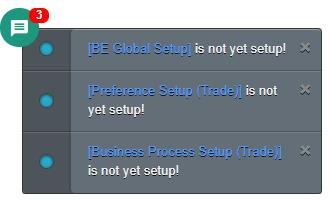 Web Services Tutorial
Web Services Tutorial
Version: 1.2 | Release Date: 07/02/2024
# Introduction
aiM18 is open to integration with various third-party systems.
aiM18 provides RESTful Web Services for developers to perform various tasks.
This tutorial focuses on two main topics:
- Create/Update Module Data through Web Services
- Generate Module Data Report
# Getting Started
The aiM18 platform offers standard RESTful Web services.
This is an industry-standard implementation, and if you have experience developing for other open platforms, it will be much easier to use.
Here are the only two things you need to prepare before starting.
- Authenticate your Application in aiM18.
- Complete Business Entity Setup. (Required only for ERP-related APIs)
Business Entity Setup
Go to the module you would like to access, a pop up message box will guide you what to be configured.

# Java Environment
The responses from the Web Services are in JSON format. If you are developing in Java, you can utilize some of our predefined Java base classes.
JSON data can be effortlessly converted into Java instances, like SqlEntity, for instance.
public static SqlEntity resolveResponseAsEntity(HttpResponse response) {
String jsonData = resolveResponse(response);
if (StringLib.isEmpty(jsonData)) {
return new SqlEntity();
}
return JSON.parseObject(jsonData, SqlEntity.class);
}
For detailed information, please refer to Common JSON Objects.
